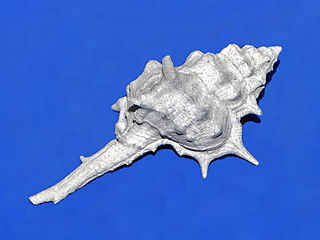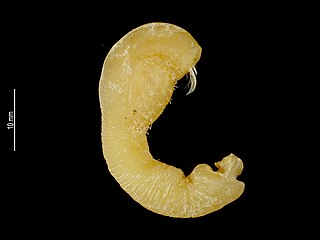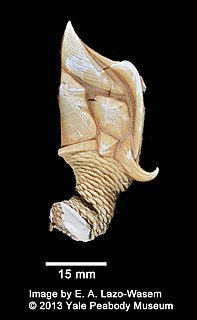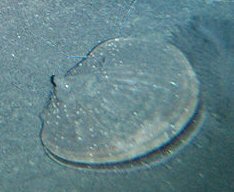
Balanus is a genus of barnacles in the family Balanidae of the subphylum Crustacea.

Thoracica is an infraclass of crustaceans which contains the most familiar species of barnacles found on rocky coasts, such as Semibalanus balanoides and Chthamalus stellatus. They have six well-developed limbs, and may be either stalked or sessile. The carapace is heavily calcified. The group includes free-living and commensal species.

The Balanidae comprise a family of barnacles of the order Balanomorpha. As a result of research published in 2021 by Chan et al., the members of the family Archaeobalanidae were merged with this family.

Neritidae, common name the nerites, is a taxonomic family of small to medium-sized saltwater and freshwater snails which have a gill and a distinctive operculum.

Carcharias is a genus of sand tiger sharks belonging to the family Odontaspididae. Once bearing many prehistoric species, all have gone extinct with the exception of the critically endangered sand tiger shark.

Whale barnacles are species of acorn barnacle that belong to the family Coronulidae. They typically attach to baleen whales, and sometimes settle on toothed whales. The whale barnacles diverged from the turtle barnacles about three million years ago.

Megabalanus is a genus of barnacles in the family Balanidae. Members of the genus grow to 7 cm (2.8 in) in length and inhabit the lower intertidal zone.
Andyrossia is an extinct genus of wasp known from the Late Cretaceous Weald Clay of southern England, containing a single species, Andyrossia joyceae. It was first named by Rasnitsyn and Jarzembowski in 1998 as Arossia; this was later realised to be a junior homonym of a barnacle subgenus containing Concavus panamensis, and was replaced by the name Andyrossia in 2000.

Fistulobalanus is a genus of barnacles, comprising the following species:
The Catophragmidae are a family of barnacles in the superfamily Chthamaloidea with eight shell wall plates, surrounded by several whorls of imbricating plates. The basis is membranous.

Promurex is a subgenus of predatory sea snail, a marine gastropod mollusk in the family Muricidae, the rock snails or murex snails.

Amusium is a genus of scallops, marine bivalve molluscs belonging to the family Pectinidae.

Heteralepas is a genus of goose barnacles in the family Heteralepadidae.

Coronula is a genus of whale barnacles, containing the following species :

Scalpellidae is a family of acorn barnacles in the order Scalpellomorpha. There are about 25 genera and 220 described species in Scalpellidae.
Arossia is a genus of barnacles belonging to the family Balanidae.

Pyrgomatidae is a family of barnacles belonging to the order Balanomorpha.

Notomegabalanus is a genus of acorn barnacles in the family Balanidae. There are about 12 described species in Notomegabalanus.

Adamussium is a genus of scallops belonging to the family Pectenidae from the Southern Ocean around Antarctica. There are three known species but only one is extant, the Antarctic scallop. Of the two extinct species A. jonkersi is from the Oligocene deposits on King George Island in the South Shetland Islands and the other, A. necopinatum, was described in 2016 from Pliocene marine deposits in the Vestfold Hills of East Antarctica.















